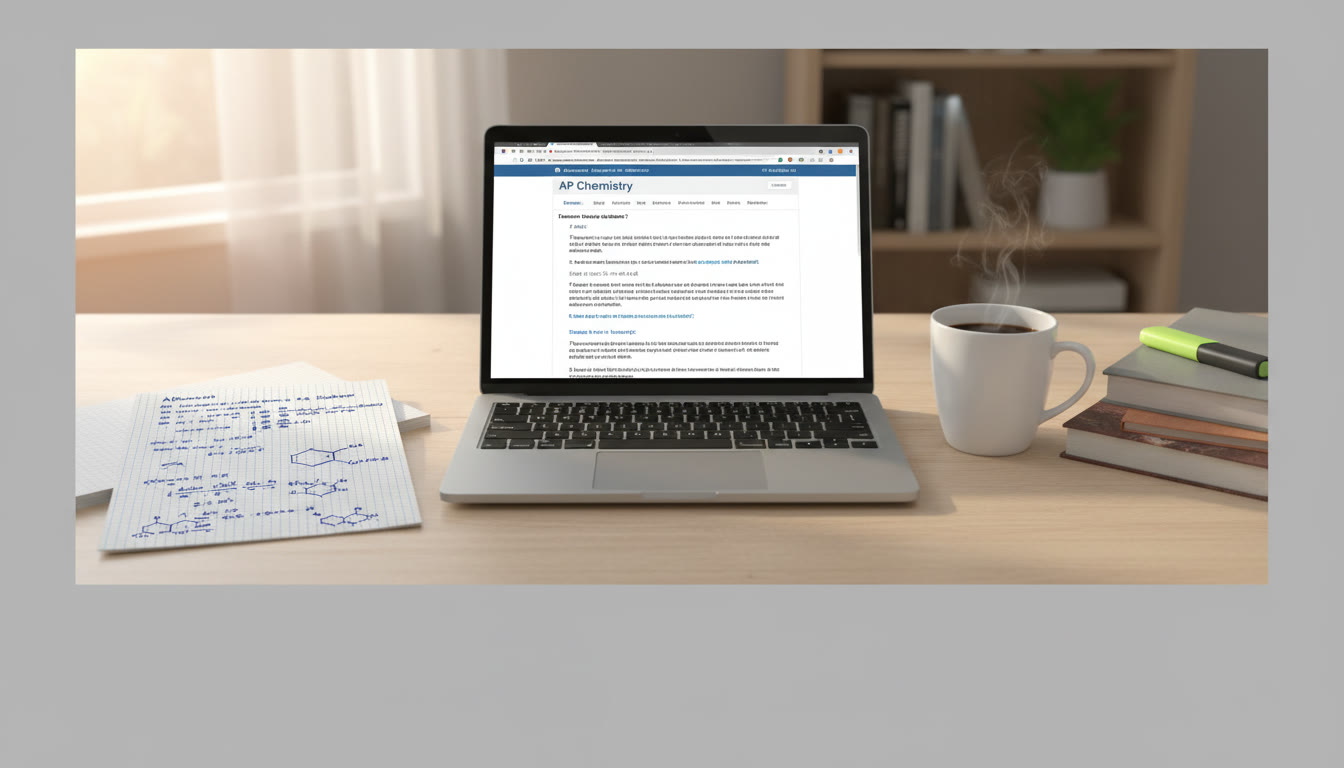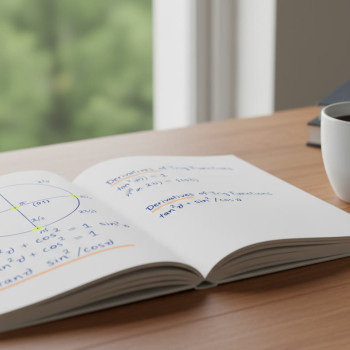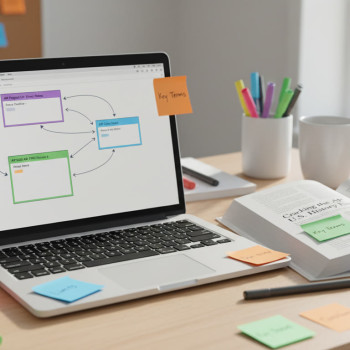Why a Personal Reference Sheet Beats Panic
If you’ve ever sat down for an exam and felt your brain spin like a playlist on shuffle, you know the power of a calm, tactile anchor. That’s what a well-made formula and definition reference sheet does: it turns chaos into a small, familiar world of facts and connections. For AP students, where breadth meets depth and timing matters, a custom reference becomes more than a cheat-sheet — it’s a study tool, a rehearsal script, and a confidence booster rolled into one.

What a Reference Sheet Is — and What It Isn’t
Let’s clear the air. A reference sheet is a distilled page (or two) of your most essential formulas, definitions, and memory anchors. It’s not a replacement for learning; it’s a scaffold. It shouldn’t be a full transcription of your textbook or the exam’s allowed reference materials. Instead, a good sheet complements practice: it clarifies what you tend to forget, speeds up recall, and guides your problem-solving instincts in a pinch.
Start With Purpose: Decide the Role of Your Sheet
Before you copy any equations, ask: what do I need this sheet to do for me? Different AP courses demand different priorities:
- AP Calculus AB/BC: key derivatives, integrals, limit forms, common antiderivatives, series tests (for BC), and a short list of common functions and their behaviors.
- AP Physics (1, 2, C): core kinematic equations, force laws, energy relations, circuit formulas, plus unit reminders and sign conventions.
- AP Chemistry: equilibrium expressions, gas laws, pKa/pKb relationships, solubility rules (short list), and common reaction mechanisms or electron configurations.
- AP Statistics: inference formulas, sampling distributions, definitions of bias and variability, and quick references for test conditions and assumptions.
Choosing the purpose narrows content and increases the sheet’s usefulness under timed conditions.
Design Principles: Make It Human-Friendly
Good design is not art for art’s sake — it’s about clarity. Adopt these principles when crafting your sheet:
- Hierarchy: Put the most used formulas at the top or in the center. Use boxes, bold headings, or larger text for these anchors.
- Chunking: Group related ideas together (algebraic identities, trig conversions, units). Your brain loves clusters.
- Icons and shorthand: Use simple arrows, +/− signs, or short words to show when to use a formula (e.g., “if rate of change -> derivative”).
- Color or emphasis: A single highlight color can separate definitions from equations without overwhelming the eye.
- Space for scratch notes: Leave a tiny margin to jot last-minute reminders during practice sessions.
One-Page vs Two-Page: Which Should You Choose?
One page is portable and forces prioritization; two pages allow more nuance. Choose based on the course and what you naturally forget. Many students use one side for equations and the other for conceptual definitions, units, and quick examples.
How to Choose What to Put On It
Not everything is worthy of the sheet. Use this decision filter when selecting items:
- Frequency: Have I used this formula more than once in practice tests or homework?
- Utility: Does the formula directly solve common question types?
- Trickiness: Is this a place I consistently make mistakes (signs, units, conditions)?
- Substitutability: Can I re-derive it quickly if needed? If derivation is long, include it.
When in doubt, test it: add it to the sheet for one week of practice. If you consult it frequently, keep it. If you never glance at it, dump it or compress it further.
Structure Your Sheet: A Simple Template
Below is a practical layout you can adapt to any AP subject. Treat it as a flexible template — personalize typography and ordering to match your thinking style.
| Section | Content | Why It Matters |
|---|---|---|
| Core Formulas | Most-used equations in condensed form | Directly speeds up problem solving |
| Definitions & Conditions | Precise meanings (e.g., “statistically significant” criteria) | Prevents misapplication of formulas |
| Quick Examples | 1–2 tiny worked examples or a simple substitution pattern | Shows how to apply a formula without re-deriving it |
| Common Pitfalls | Sign errors, unit traps, domain restrictions | Pre-warn your future self |
| Memory Hooks | Mnemonics or one-line reminders | Helps rapid recall under stress |
Example: Mini Reference for AP Calculus AB
As an illustration, a compact calculus sheet might include:
- Derivatives of common functions (polynomial, exponential, trig, inverse trig).
- Integration shortcuts and substitution reminders.
- Fundamental Theorem of Calculus in both parts with a one-line reminder on when to use each part.
- Concavity, inflection quick tests, and L’Hôpital’s rule trigger conditions.
- Two tiny examples: one derivative trick and one integral by substitution.
From Blank Page to Power Tool: Step-by-Step Creation
Follow this five-step process to craft a sheet that’s tailor-made for your brain.
- Step 1 — Audit: Pull three recent practice tests or homework sets. Mark the top 15–20 formulas and the most confusing concepts.
- Step 2 — Prioritize: Use the decision filter above to pick what’s indispensable.
- Step 3 — Draft: Lay out content with clear headings and small worked examples. Keep language concise — short verbs and clear symbols.
- Step 4 — Test-drive: Use the sheet while doing timed practice for at least two weeks. Note what you reach for immediately and what you never use.
- Step 5 — Iterate: Compress, reorganize, and clean it until every line pulls its weight.
Handwritten vs Digital: Which Wins?
Both have advantages. Handwriting leverages motor memory — you’re more likely to remember what you wrote. Digital sheets are easy to edit and scale. Try a hybrid: draft digitally for neatness, then handwrite a final condensed copy. That final act of writing cements recall.
Practice with the Sheet: The Real Power Move
A reference sheet only helps if you practice with it. Treat it like a training wheel that you remove slowly:
- Phase 1 — Open Use: Use the sheet freely during untimed practice to learn where each formula “lives.”
- Phase 2 — Limited Use: Force yourself to solve problems without it but allow a single glance after 5 minutes.
- Phase 3 — Recall Only: Try tasks without the sheet, then check it for reflection. By exam day, you want most items to be automatic.
Timed practice is essential: simulate the real pacing of AP sections and notice which formulas slow you down. That’s your cue to refine the sheet or practice the underlying concept further.
Smart Study Habits That Make Your Sheet Work Harder
Creating the sheet is only half the battle. Pair it with study routines that turn passive notes into active skills:
- Spaced Repetition: Review items from your sheet on a schedule — short daily reviews, then weekly, then every two weeks.
- Active Recall: Cover the formulas and try to recreate them from memory; then check and correct.
- Interleaved Practice: Mix problems across different topics to force flexible thinking and improve transfer.
- Teach It: Explain a formula and its use to a peer or out loud. Teaching reveals gaps faster than solo practice.
If you’re using a guided tutoring program like Sparkl’s personalized tutoring, ask your tutor to build short, targeted drills tied to your sheet: one-on-one guidance can highlight which items deserve prime real estate and provide AI-driven insights into your mistake patterns so your sheet evolves with your learning.
Common Mistakes and How to Avoid Them
Students often fall into the same traps when making reference sheets. Watch for these.
- Overcrowding: Too much information makes retrieval slower. If you can’t find a formula within 10 seconds during practice, simplify.
- Overconfidence: Relying on the sheet without practicing derivation weakens conceptual understanding.
- Mislabeling: Ambiguous notation breeds error. Always include units and variable definitions where space allows.
- Not Iterating: If it’s been a month since you updated the sheet, it’s likely stale. Evolve it with your progress.
Two Practical Templates (Copy-and-Adapt)
Below are two compact starting templates you can adapt. Copy them to your page and then personalize:
| Template | Contents |
|---|---|
| Quick STEM (Calculus/Physics) |
|
| Quick Quantitative (Chemistry/Statistics) |
|
How to Use the Sheet on Exam Day
AP exam administrations provide some reference materials for certain subjects; however, a personal sheet is your rehearsal tool. On exam day, rely on your practice memory rather than trying to read the sheet for the first time. Use it during warm-ups or last-minute review sessions in the days before the exam to anchor confidence. If you’re working with printed reference materials provided by your proctor, your personalized sheet helps you navigate those materials faster because you already practiced with a condensed version of what matters most.
Day-Before Checklist
- Finalize a handwritten compact copy of your sheet and run two practice sets with it.
- Simulate timing and only glance at the sheet the same way you plan to during the real test.
- Pack all essentials: permitted calculator, pencils, photo ID, snack, and a calm playlist for the walk to school.
Case Study: Turning Weakness into Strength
Imagine a student named Maya preparing for AP Physics 1. Maya consistently mixed up positive and negative work signs and lost points on energy conservation problems. She created a tiny corner on her sheet titled “Sign Conventions” with a small diagram and two anchor rules: (1) define system boundary first, (2) choose upward as positive by default with a one-line example. After a week of focused practice while consulting that corner, her careless errors dropped dramatically. With Sparkl’s personalized tutoring, Maya later worked one-on-one on three problem types where sign conventions mattered, and her tutor suggested an AI-generated quiz that targeted her error pattern. That combination of a tiny, clear reference and guided practice changed shaky recall into reliable habit.
When to Seek Help: Use Tutors Strategically
Creating and refining a reference sheet is an iterative skill. If you consistently don’t know which items to include or you keep making the same mistakes, that’s a sign to get help. One-on-one tutoring — for instance, Sparkl’s personalized tutoring — can streamline the process by:
- Diagnosing the 3–5 high-impact formulas you use most often.
- Designing short, targeted practice that uses the sheet until recall becomes automatic.
- Providing AI-driven insights to show which problem types cause the most leakage in your knowledge.
Good tutoring is not about handing you answers; it’s about making your study time surgical and efficient.
Final Tips: Keep It Personal, Keep It Alive
Here are the best micro-habits to make your reference sheet a living study asset:
- Update it every two weeks based on recent mistakes and practice-test data.
- Keep a “lessons learned” sticky note on the reverse side: single-sentence reminders of your biggest errors.
- Use one color for formulas and another for conditions/assumptions to avoid speed-reading errors.
- Practice the behavior of grabbing the sheet quickly — this muscle memory matters more than you think.

Closing Thought: The Sheet Is a Mirror
A formula and definition reference sheet is more than a compilation of equations; it’s a mirror that reflects how you think under pressure. The best sheets are concise, tested, and tailored. They show you where you’ve improved and where you still need practice. If you treat the sheet as a living tool — revise it, practice with it, and pair it with focused help when needed — you’ll find that exams become less of a trial and more of an opportunity to show what you’ve polished.
One Last Practical Nudge
Start today: pick one past problem that consistently trips you up, turn its solution into a 2-line example on your sheet, and run three timed practice problems using only that sheet. If you’re working with guided support, ask your tutor to create a quick three-question drill based on your sheet. Little, deliberate steps compound fast — and by exam week, you’ll be grateful for the tidy map you made for your brain.
Good luck — and remember: a great reference sheet isn’t about cramming more facts; it’s about making the right facts quick and trustworthy when it matters most.




















No Comments
Leave a comment Cancel